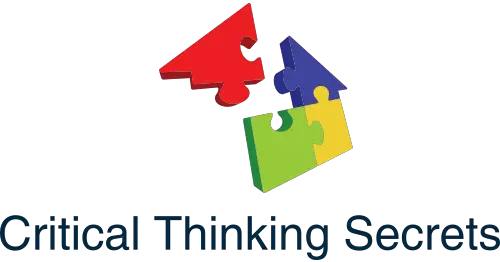Crises can happen quickly and change everything in an instant. In these moments, decision-making and clear thought matter more than ever.
Thinking in crises means using logic, creativity, and calm, even when things feel out of control. This skill helps people make good choices when facing uncertainty or danger.

Many experts believe that reading about real-life crisis decisions can help people prepare for emergencies. Crisis situations often create pressure and confusion, but deliberate and creative thinking helps avoid acting only on fear or rushing into mistakes.
For example, staying aware, gathering facts, and communicating clearly are keys to working through tough events.
Key Takeaways
- Clear thinking during a crisis leads to better decisions.
- Creative and calm responses improve outcomes under pressure.
- Learning from past crises supports future success.
Understanding Thinking in Crises

During a crisis, stress, urgency, and uncertainty test decision-making abilities. The way people think in these moments affects safety, outcomes, and recovery.
Definition and Core Principles
Thinking in crises means processing information and making decisions when events are unpredictable and fast-changing. This often involves a crisis mindset, where urgent action is prioritized, and typical routines may not work.
This mindset is shaped by heightened awareness and constant scanning for new risks or changes. People must quickly judge what information is trustworthy and what can wait.
Core principles include being flexible, focusing on immediate problems, and staying aware of how the situation evolves. Experts warn that rigid thinking makes adapting harder and increases struggles during stressful events.
Being open-minded and ready to pivot helps people respond more effectively in emergencies, as explained in insights on rigid thinking in a crisis.
Types of Crises
Crises come in many forms, and each type presents unique problems and demands. Some common types include:
- Natural disasters such as floods, hurricanes, or earthquakes.
- Health emergencies like disease outbreaks or pandemics.
- Economic crises such as mass layoffs or market crashes.
- Personal crises like loss, trauma, or sudden life changes.
- Technological crises caused by hacking, data loss, or system failures.
Every crisis creates uncertainty and forces people to act with limited information. Situations can change minute by minute, so understanding the type of crisis helps people decide what steps to take.
Significance in Modern Contexts
Today’s world is connected and fast-moving, so crises can spread quickly and affect many people. Decisions now impact not only a local area but also distant communities and entire systems.
During modern emergencies, digital tools spread news and misinformation at the same time, making it harder to judge what is true. People need strong awareness skills to spot real dangers and avoid panic.
Thinking clearly under pressure helps teams work together, prevents mistakes, and keeps people safe. Awareness is now a key skill for leaders and individuals facing crises, as described by the psychology of crisis.
Recognizing uncertainty and preparing for change allow people to recover faster when things go wrong.
Cognitive Processes in Crisis Situations
In a crisis, the brain works differently. People face more uncertainty, and their problem-solving changes.
They must use more energy to adapt, keep track of risks, and make choices quickly.
Adaptability and Flexibility
Crisis situations demand quick shifts in thinking because plans often go wrong. People must drop older habits that do not work and try new ideas.
Being flexible helps a person adjust to fast-changing events and limits mistakes. Adaptability is important for effective problem solving.
It means recognizing when a plan fails and having the energy to try again in a new way. Flexible thinkers overcome getting stuck by being open to using tools, advice, or teamwork to find answers.
A crisis mindset causes higher attentional switching costs, so focusing on what matters most is challenging. Those who can adapt may find solutions faster, even in high stress situations, as explained in this discussion of how a crisis mindset activates implicit knowledge.
Managing Uncertainty
Uncertainty is always present during crises. People do not always have all the facts to make a perfect choice.
This feeling causes anxiety and can make it hard to plan what to do next. Managing uncertainty means balancing risks, using available information, and making logical choices as things change.
People should avoid rushing to judge or letting cognitive bias take over. Lists and simple charts can help keep track of what is known and what remains unclear.
Crises often bring forward cognitive biases. These mental shortcuts sometimes lead to mistakes, especially when time and facts are limited.
Learning to spot and question personal biases improves how people handle uncertain situations. For more details, see the influence of cognitive bias on crisis decision-making.
Decision-Making Under Pressure
Making decisions under pressure is common in any crisis. The brain sometimes goes into “fight or flight” mode, which can speed up reactions but also lead to mistakes.
Good decisions in crisis require focus, even when feeling stressed or tired. Using step-by-step checklists helps structure choices.
People may need to prioritize urgent problems, then work through less urgent tasks. Taking short breaks prevents overwhelm, and seeking input can improve decisions.
Stress and time limits challenge the ability to weigh options calmly. Often, emotions shape choices more than facts.
Recognizing this helps people slow down, check their reasoning, and avoid snap judgements. The psychology of a crisis is explained more in this chapter by the CDC, outlining common mental states and behaviors in crisis conditions.
Role of Communication During Crises
Clear communication helps teams share accurate information quickly and builds trust. Organizations rely on structured messages to reduce confusion and support decision-making under stress.
Effective Communication Strategies
Strong crisis communication starts with delivering clear, accurate, and timely information. The use of simple language can prevent misunderstandings.
Messages should come from credible sources and be fact-checked before sharing. Leaders can use a mix of channels such as email, public announcements, and meetings to reach everyone involved.
Having a crisis communication plan gives teams guidance on what to say and when to say it. This limits rumors and reduces the spread of misinformation.
Table: Common Effective Strategies
| Strategy | Purpose |
|---|---|
| Use clear messaging | Avoids confusion |
| Verify information | Stops the spread of rumors |
| Regular updates | Maintains trust |
| Designate spokespersons | Ensures consistent messages |
Engaging Stakeholders
Engagement with stakeholders is key during a crisis. Stakeholders include employees, customers, community members, and other partners.
These groups need different information based on their roles and concerns. Organizations should listen to stakeholders and address their worries directly.
Showing empathy builds trust and helps keep individuals focused during uncertainty. Providing regular updates through trusted channels assures stakeholders they are informed about what actions are being taken.
Putting the needs of affected groups first—such as recognizing victims or those most at risk—shows a commitment to their well-being. For more tips about communication, see effective crisis communication advice.
Maintaining Collaboration
Collaboration ensures that everyone involved in crisis management works together toward shared goals. Teams need to openly share important updates and resources.
A collaborative environment grows with regular meetings, digital collaboration tools, and clear roles. Encouraging feedback helps leaders find and fix problems faster.
Open channels for communication allow people to raise issues or share successes. Prompt sharing of key information helps prevent costly delays and mistakes.
Working together is especially important for dynamic situations that require fast adaptation.
Driving Innovation and Productivity
Businesses face crises that demand quick adaptation. They need new ideas to solve problems and strategies to keep moving forward, even when daily operations become difficult.
Encouraging Creative Problem Solving
Crises force organizations to find solutions fast. Routine approaches often do not work, so leaders must support new ways of thinking.
Brainstorming sessions, cross-functional teams, and open feedback help spark fresh ideas. This active effort to welcome input helps teams find answers that might not show up in normal times.
Creating space for experimentation is important. Managers should allow trial and error and accept that some attempts may fail.
Encouraging employees to learn from mistakes can speed up progress. According to the Harvard Business Publishing, unique conditions during crises give innovators more freedom to create change quickly.
Sharing knowledge between teams also boosts results. For example, a table outlining each team’s challenges and ideas can support collaboration:
| Team Name | Main Challenge | Suggested Solution |
|---|---|---|
| Sales | Lost clients | New online tools |
| HR | Low morale | Wellness checks |
Sustaining Productivity in Challenging Times
Productivity often drops during uncertainty. Leaders should set clear priorities so teams know what is most important.
Tools from digital project tracking to regular check-ins can set the pace and maintain focus. Flexibility is key.
Allowing shifts in work hours or locations can help teams keep up momentum. Organizations that adapt quickly can get more done, even if resources are tight.
A McKinsey report notes that focusing on both safety and ongoing innovation leads to better productivity.
Leaders can boost energy and motivation in hard times by celebrating small wins. Recognizing effort and progress keeps employees engaged.
Small rewards or sharing success stories help maintain high energy levels across teams.
Psychological and Emotional Dimensions
Staying calm and making smart decisions during a crisis depends on both emotional stability and mental awareness. People need strategies to handle stress and keep their energy steady.
This helps them stay engaged and aware of what is happening around them.
Building Resilience
Resilience means bouncing back after setbacks. In a crisis, resilient people adapt faster and feel less overwhelmed.
They are also more likely to help others. This often starts with a healthy mindset and positive self-talk.
Some ways to build resilience include:
- Staying connected: Talk with friends, family, or support groups.
- Setting realistic goals: Focus on small, manageable steps.
- Learning from setbacks: Reflect on past experiences to find strengths.
Paying attention to both feelings and thoughts helps strengthen resilience. Recognizing positive emotions, like relief after overcoming a challenge, can boost mental energy.
People who practice adaptive thinking have stronger coping skills during a crisis. Experts at the CDC highlight the value of this approach.
Managing Stress and Energy
Stress is common during crises. If left unchecked, it drains energy and reduces awareness.
The ability to manage stress helps people stay alert and make better choices.
Key stress management strategies include:
- Breathing exercises: Slow, deep breaths can reduce anxiety.
- Taking breaks: Short pauses help recharge energy.
- Moving the body: Physical activity increases focus and lowers stress.
- Prioritizing sleep: Rest is essential for balanced mood and mental clarity.
Noticing stress signals like irritability or fatigue allows for quicker responses. These habits support emotional and mental wellness, as noted in articles on mental wellness and self-care.
Case Study: Thinking in the Covid-19 Crisis
The Covid-19 crisis showed that urgent, complex challenges require people to adapt their thinking and actions quickly. Decision makers balanced science, public health, and the economy under pressure.
Lessons Learned from the Pandemic
Clear and honest communication helped people understand changing guidelines. Governments and health organizations shared updates about new variants, vaccines, and safety measures.
Misinformation spread quickly, so leaders needed to be open about risks and evidence. Crisis management required collaboration between health professionals, governments, and communities.
Hospitals adjusted to new protocols and worked with national health departments. Countries with strong public health systems responded better to demands on healthcare and resources.
Systems thinking—considering how actions and factors connect—helped people understand the impact of policies and public response. More details about these approaches are in this case study on systems thinking and Covid-19.
Flexible strategies worked best as strict rules changed with new information. Communities played a major role by following advice and supporting each other.
Implications for Future Crises
Responding to future crises will require better coordination and communication. Sharing data openly between regions and countries helps everyone respond faster and more effectively.
Training for public health leaders and emergency planners should include systems thinking and real-life simulations. Collaboration during vaccine development showed how sharing information and resources strengthens crisis response.
Building these connections ahead of time makes future responses stronger. Modern technology, like websites and social media, helps reach people quickly, but it must be used responsibly to avoid spreading wrong information.
Governments and organizations should make plans that can change as situations develop. Listening to experts, communities, and international partners supports better crisis management.
Lessons from the Covid-19 response will shape how people prepare for future emergencies. More analysis is available in this case study on public health and critical thinking during Covid-19.
Fostering a Crisis-Ready Mindset
Building a crisis-ready mindset depends on staying prepared, aware, and willing to work together. Leaders and teams need strategies that improve individual alertness and group problem-solving.
Enhancing Awareness and Preparation
Raising awareness starts with identifying possible risks. Teams should practice spotting weak signals—small clues that could predict bigger problems.
This helps prevent issues from becoming full crises. Regular drills and scenario planning are important for preparation.
Teams that train for different outcomes respond faster and with more confidence. Organize these steps with clear checklists or guides.
Leaders should focus on clear, honest communication. Sharing updates and lessons learned keeps everyone informed.
This approach supports adaptability and readiness for sudden changes. Using recognized methods, like risk assessments and business continuity plans, supports awareness and preparation.
Information on creating a crisis-ready culture shows that proactive thinking is key to staying ahead of problems.
Cultivating Collective Engagement
A crisis-ready mindset grows stronger when everyone is engaged. Open and regular communication builds trust so team members feel safe sharing worries or solutions.
Encouraging participation in planning and problem solving ensures more voices are heard. Collaboration across roles and departments increases knowledge-sharing.
Simple meetings or group brainstorming sessions work well for this. Leaders should model calm, fact-based thinking to guide others.
Recognizing and celebrating small successes helps maintain motivation and teamwork in tough times. Companies that encourage engagement respond better to fast-changing situations.
Resources show that a resilient workforce comes from fostering involvement and trust at every level.
Frequently Asked Questions
Effective crisis management depends on making quick, informed choices and maintaining clear communication. People and organizations can prepare for unexpected challenges by building resilience and developing the right skills.
How can we effectively manage decision-making in high-pressure situations?
Breaking down complex problems into smaller steps helps leaders focus on important details. Using checklists or frameworks like the “who, what, where, when, why, and how” questions ensures nothing is missed.
In critical moments, gathering perspectives from trusted team members helps avoid hasty or emotional choices. This approach supports clear decision-making during a crisis.
What strategies can be employed to remain calm during a crisis?
Taking deep breaths, pausing before responding, and focusing on facts help reduce stress. Setting priorities and concentrating on tasks that can be controlled may keep anxiety from spreading.
Staying calm also allows for better communication and problem-solving.
What are the common psychological effects of facing a crisis, and how can one cope with them?
People may feel fear, helplessness, or anger during a crisis. Some struggle with sleep or lose interest in usual activities.
Talking to others, maintaining routines, or seeking professional support can help. Being honest about emotions and practicing self-care are also important steps.
How do organizations prepare for unforeseen crises?
Organizations create crisis communication plans and assign clear roles to team members. They develop frequently asked questions for crises and run practice drills to identify weaknesses.
These preparations allow for a faster, more organized response when problems arise.
What role does leadership play in guiding teams through turbulent times?
Leaders provide direction, offer reassurance, and share clear messages. They answer pressing questions and make hard decisions when needed.
Effective leaders listen to feedback and adjust plans as conditions change, helping teams stay focused and resilient.
How can individuals develop resilience to better handle future crises?
Building resilience involves learning from past experiences. Staying open to new skills also helps.
Strong support networks and flexible thinking help people handle tough situations. Regular self-reflection can also make it easier to cope.
Practicing healthy habits strengthens the ability to adapt. Setting goals makes it easier to recover from setbacks.





